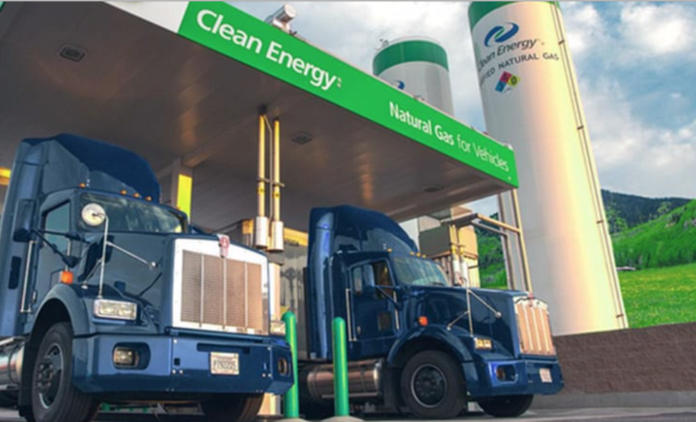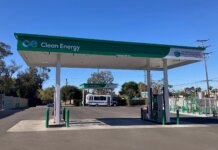The energy weighted carbon intensity (CI) value of California’s natural gas vehicle (NGV) fuel portfolio in the Low Carbon Fuel Standard (LCFS) program was below zero – at -0.85 g CO2e/MJ – according to recently released Q2 data from the California Air Resources Board (CARB) .
This is the first time in the history of the LCFS program that any low carbon fuel portfolio has achieved a carbon negative status.
“Given the large and growing volume of heavy-duty NGVs already hard at work on California’s roads, this is an extremely significant milestone,” says Todd Campbell, chair of the California Natural Gas Vehicle Partnership (CNGVP) and vice president of public and regulatory affairs of Clean Energy. “Both the short- and long-term climate benefits of this achievement are extremely significant. When combined with the fact that most NGVs recently placed into service are powered by near-zero emission engines, the NGV industry is providing the most substantial and cost-effective contributions towards California’s goals to reduce criteria and greenhouse gas emissions while eliminating the use of diesel in favor of renewable, low carbon fuels.”
California’s LCFS, which measures the climate impact of various motor vehicle fuel pathways, is a market-based incentive program designed to decrease the carbon intensity of California’s transportation fuel and instead provide a range of low-carbon and renewable fuel alternatives, reducing petroleum dependency and achieving air quality benefits. The CI of any given fuel measures all greenhouse gas emissions associated with the entire life cycle of a transportation fuel – including production and consumption. Transportation fuels with low – or even negative – CI scores are better for the environment as they produce less climate-altering greenhouse gas emissions.
Renewable natural gas (RNG) – which is produced by capturing and processing the methane emitted from organic sources including dairy waste, wastewater treatment plants, food and green waste, landfills and forest management – has the lowest carbon intensity rating of all fuels in the CARB LCFS program. Many forms of RNG, such as that produced from food and green waste, have a carbon-neutral and even a carbon-negative rating. Other forms of RNG, such as that produced from dairy waste, can have carbon intensity ratings that are 200 to 300% lower than even a battery-electric vehicle powered by renewable energy such as solar or wind.
The most recent data from CARB’s LCFS program also confirms another significant milestone – RNG made up nearly 90% of all NGV fuel in the program and consumed in California in the first half of the year. Looking ahead, both the volume and carbon intensity benefits of RNG consumed by California will continue to grow. More than $1 billion of investment is currently taking place in California to develop a wide array of in-state RNG production projects. As California continues to source increasing amounts of transportation-grade RNG from projects with carbon negative sources – such as dairy biogas – the average carbon intensity of California-produced RNG will only continue to improve.
RNG can be used as a seamless, drop-in replacement for conventional natural gas in transportation. Additionally, due to the financial incentives available through programs including the LCFS, RNG can be purchased at a price on par with – or lower than – the price of diesel, based on the CI.
Fleets across the country have been successfully using NGVs for more than two decades. Today, more than 175,000 NGVs are on U.S. roads. Near-zero natural gas trucks and buses are commercially available from more than 50 different vehicle manufacturers – including Autocar, Bluebird, El Dorado National, Freightliner, Gillig, Kenworth, Mack, Peterbilt, Thomas, Tico, Volvo and others. These well-established brands support robust sales and service networks, as well as an expansive public fueling network dispensing RNG.
To learn more about how near-zero emission natural gas trucks fueled by RNG offer one of the best opportunities for California to achieve clean air and climate change mitigation as quickly, cost-effectively and efficiently as possible, click here.







